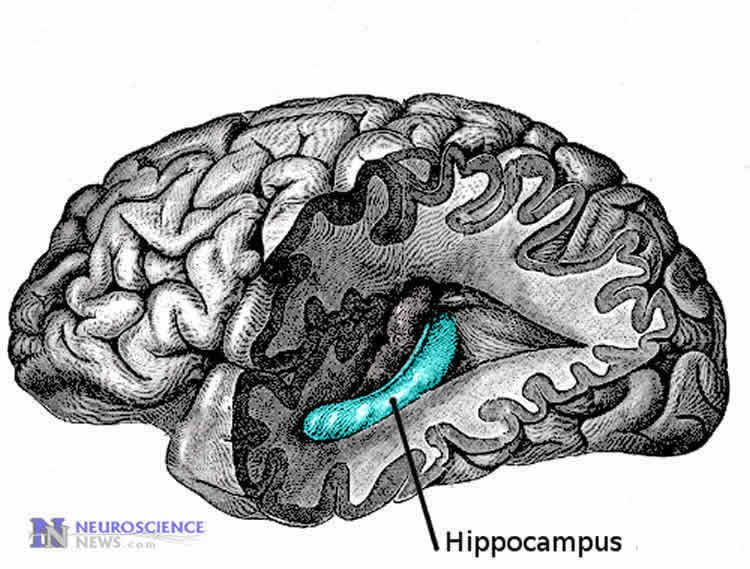A new study sheds light on a powerful tool that may detect signs of Alzheimer’s disease before patients show any symptoms of cognitive decline: the home computer.
An early online version of this paper detailing the findings has been published and is scheduled for publication in the Journal of Alzheimer’s Disease.
OHSU researchers have found a significant correlation between infrequent daily computer use and brain imaging signs commonly seen in early-stage Alzheimer’s patients.
Using an MRI scan, the researchers measured the volume of the hippocampus — a brain region integral to memory function — in adults aged 65 years and older who were cognitively intact and dementia-free.
Diminished hippocampal volume is a well-known sign, or biomarker, of Alzheimer’s disease and the eventual development of dementia.
The study, led by Lisa Silbert, M.D., with the OHSU Layton Center for Aging & Alzheimer’s Disease, found that an additional hour of computer use a day was associated with a .025 percent larger hippocampal volume. A smaller hippocampal volume is an indicator of increased risk for developing Alzheimer’s disease. The researchers will continue to follow these participants to see if their smaller hippocampal volume and decreased computer use predict future cognitive decline.
Silbert and colleagues hypothesize that the reason that patients with smaller hippocampal volumes may spend less time using their home computer is it requires the use of multiple cognitive domains, including executive function, attention and memory.

The researchers have been following a group of volunteers in Portland for nine years through a suite of embedded technology in their homes. These tools allow the researchers to assess their mobility, sleep, socialization, computer use and medication intake. The purpose of this monitoring is to identify meaningful changes in everyday life that don’t involve the participants taking tests or going to doctor appointments.
Source: Daphne Watrin – IOS Press
Image Source: The image is in the public domain.
Original Research: Full open access research for “Less Daily Computer Use is Related to Smaller Hippocampal Volumes in Cognitively Intact Elderly” by Silbert, Lisa C; Dodge, Hiroko H.;Lahna, David; Promjunyakul, Nutta-on; Austin, Daniel; Mattek, Nora; Erten-Lyons, Deniz; and Kaye, Jeffrey A.a; b; d in Journal of Alzheimer’s Disease. Published online March 9 2016 doi:10.3233/JAD-160079
Abstract
Less Daily Computer Use is Related to Smaller Hippocampal Volumes in Cognitively Intact Elderly
Background:
Computer use is becoming a common activity in the daily life of older individuals and declines over time in those with mild cognitive impairment (MCI). The relationship between daily computer use (DCU) and imaging markers of neurodegeneration is unknown.
Objective:
The objective of this study was to examine the relationship between average DCU and volumetric markers of neurodegeneration on brain MRI.
Methods:
Cognitively intact volunteers enrolled in the Intelligent Systems for Assessing Aging Change study underwent MRI. Total in-home computer use per day was calculated using mouse movement detection and averaged over a one-month period surrounding the MRI. Spearman’s rank order correlation (univariate analysis) and linear regression models (multivariate analysis) examined hippocampal, gray matter (GM), white matter hyperintensity (WMH), and ventricular cerebral spinal fluid (vCSF) volumes in relation to DCU. A voxel-based morphometry analysis identified relationships between regional GM density and DCU.
Results:
Twenty-seven cognitively intact participants used their computer for 51.3 minutes per day on average. Less DCU was associated with smaller hippocampal volumes (r = 0.48, p = 0.01), but not total GM, WMH, or vCSF volumes. After adjusting for age, education, and gender, less DCU remained associated with smaller hippocampal volume (p = 0.01). Voxel-wise analysis demonstrated that less daily computer use was associated with decreased GM density in the bilateral hippocampi and temporal lobes.
Conclusions:
Less daily computer use is associated with smaller brain volume in regions that are integral to memory function and known to be involved early with Alzheimer’s pathology and conversion to dementia. Continuous monitoring of daily computer use may detect signs of preclinical neurodegeneration in older individuals at risk for dementia.
“Less Daily Computer Use is Related to Smaller Hippocampal Volumes in Cognitively Intact Elderly” by Silbert, Lisa C; Dodge, Hiroko H.;Lahna, David; Promjunyakul, Nutta-on; Austin, Daniel; Mattek, Nora; Erten-Lyons, Deniz; and Kaye, Jeffrey A.a; b; d in Journal of Alzheimer’s Disease. Published online March 9 2016 doi:10.3233/JAD-160079







